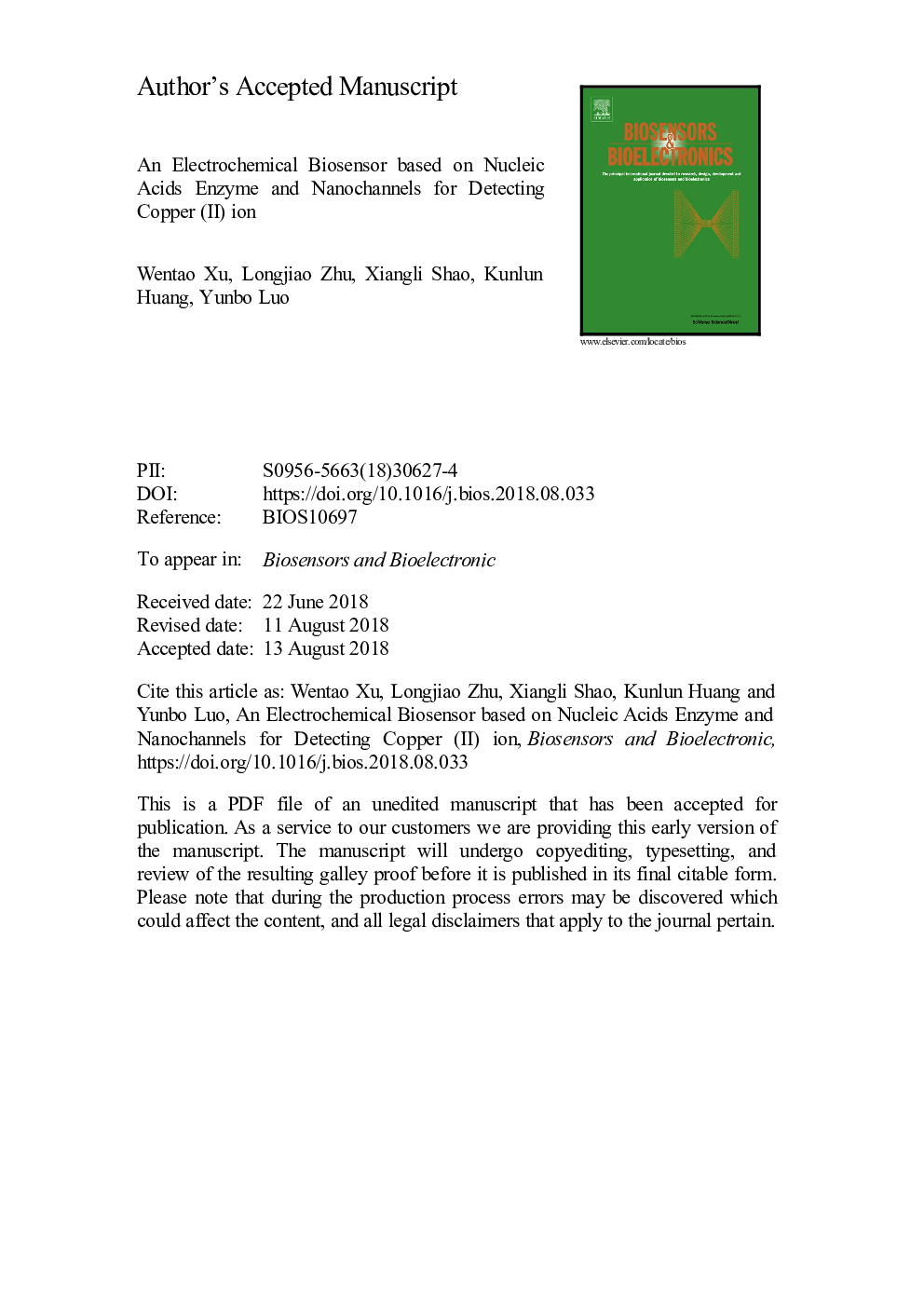| Article ID | Journal | Published Year | Pages | File Type |
|---|---|---|---|---|
| 10134299 | Biosensors and Bioelectronics | 2018 | 15 Pages |
Abstract
An electrochemical biosensor based on Cu2+-dependent cleavage DNAzyme (cDNAzyme), Exponential Amplification Reaction (EXPAR), and single-strand triggered DNA hybridization chain reaction (HCR) was developed for detecting the copper (II) ions. This method capitalizes on the specific recognition of cDNAzyme, the single strand accumulated isothermal amplification of EXPAR, and the enzyme-free isothermal DNA assembly of HCR. In the presence of Cu2+, the catalytic chain of cDNAzyme split the substrate chain to produce single-stranded DNA (Oligo X). With the help of the EXPAR, the trace Oligo X was amplified and converted to the initiator DNA (Oligo Y). After adding the initiator DNA (Oligo Y) into nanochannel, massive DNA superstructures grew from the capture probe (CP) that were pre-immobilized on the nanochannel wall, resulting in a sharp decrease of the effective diameter of the nanochannel. As a result, the transmembrane ionic current significantly decreased due to the effective closing of the nanochannel. Finally, the copper (II) ion was detected by monitoring the changes of transmembrane ionic current. The developed electrochemical biosensor also displayed high selectivity for Cu2+, which could be useful for monitoring Cu2+ above ten picomole.
Related Topics
Physical Sciences and Engineering
Chemistry
Analytical Chemistry
Authors
Wentao Xu, Longjiao Zhu, Xiangli Shao, Kunlun Huang, Yunbo Luo,
